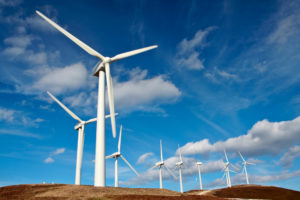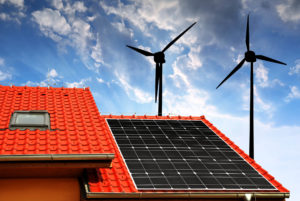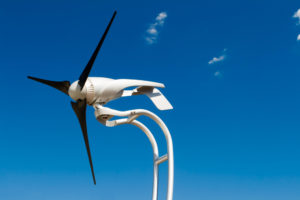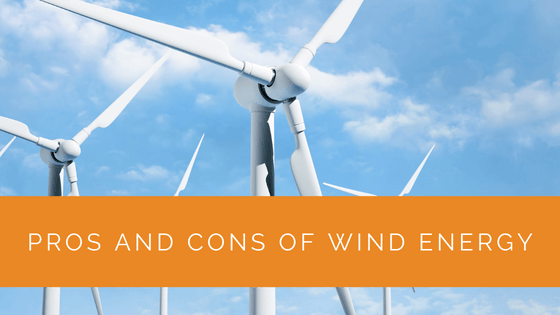Wind energy stands at the forefront of sustainable power solutions, offering a clean and renewable alternative to traditional energy sources. This article explores the pros and cons of wind energy, a growing important topic in our quest for environmentally friendly and efficient energy sources. Wind energy harnesses the natural power of wind through sophisticated technology, converting it into electricity – an ingenious and complex process. While it boasts numerous advantages such as sustainability, cost-effectiveness, and minimal environmental impact, wind energy also presents challenges like intermittency, potential visual and noise pollution, and infrastructural demands. Understanding these facets is crucial for anyone considering wind energy as a viable option for power generation, whether for individual use or on a larger scale. Dive into this balanced examination to discover how wind energy could shape our future energy landscape.
Contents
What Is Wind Energy, and How Is It Harnessed?
A highly sustainable and renewable energy source, wind energy is generated by the wind. To harness the energy of wind, large and towering wind turbines or vaned wheels with blades rotate by the wind’s power (almost like a helicopter of sorts).
You can think of this wind turbine in terms of an electric fan. Where the latter uses electricity to produce wind, the former does the opposite – harnesses wind’s energy to produce electricity. So how does all of this work?
- The turbine converts wind energy into electricity based on the blades’ aerodynamic force.
- The air pressure across both sides of the blades differs, creating a lift and drag movement.
- Since the ‘lifting’ force is stronger than the ‘dragging’ force, it makes the rotor spin.
- The rotor is connected to the generator directly or through a gearbox. The generator speeds up the rotation.
- This conversion of the aerodynamic force into sped-up generator rotation generates electricity.
One important thing to remember here is that wind is a type of solar energy. Sounds too bizarre? The reason for this is it is brought into existence through a mix of three concurrent events –
- The uneven heating of the sun
- The earth’s rotation on its axis
- Several irregularities present on the earth’s surface
This is precisely why wind power flow and patterns vary across the United States and other parts of the world. Such factors play a crucial role in the development and operation of wind plants.
Once the availability of wind resources in a particular area is discerned, wind farms consisting of numerous wind plants are erected in a designated spot. This area is usually not space-consuming in light of the potential it holds for electricity generation.
That should provide you context on what wind energy is all about. Let’s examine its pros and cons to help you decide whether you should invest in it for your residence or commercial property.

Advantages of Wind Energy
There’s a good reason why wind is the fastest-growing source of clean energy in the world. In fact, the United States is set on a future where 20% of its electricity is produced through wind power alone. So, what are the top benefits of this energy source?
Wind Energy Is Clean Energy
Let’s start by stating the obvious, which is also the most important argument supporting wind energy – it is a sustainable and clean energy source. In the case of oil or coal power plants, a significant amount of pollutants are emitted into the atmosphere, mainly carbon dioxide, nitrogen dioxide, and sulfur dioxide.
The burning of these non-renewable energy resources requires the use of harmful chemicals. This process, in turn, releases hazardous wastes into nearby landfills and abandoned mines, among others.
Since wind farms do not do any of the above, they are not a threat to the environment. As a bonus, they help reduce the world’s reliance on fossil fuels and natural gas.
Wind Energy Is Renewable
Wind as an energy producer is free to harness. Plus, if you reside in an area that receives this energy in abundance (high wind velocity regions), it is all the more available and ready to be used. Like every other gift of nature, wind energy cannot be exhausted.
The greatest fear surrounding fossil fuels is that they are non-renewable and will be exhausted at some point. However, as long as the sun shines and the wind blows, you won’t have to worry about running out of wind-generated electricity.
There Are Minimal Operating Costs Involved
One major fear surrounding wind farms is that they are expensive to set up. While this may be true, the benefits of doing so completely offset the initial expenses involved. This is because energy production through wind power involves minimal operational costs.
There are two main reasons for this –
- Wind is a resource freely available in nature.
- The turbines are incredibly low-maintenance and will function well for years down the line.

Wind Energy Is Highly Cost-Effective
There’s more good news – you do not need to invest in an entire wind farm or even an individual turbine to experience the benefits of wind-generated electricity.
Being cost-effective, wind electricity produced from a single farm can be used to light up several homes. All you need to do is subscribe to the services of a nearby service organization specializing in wind electricity for your home or business.
Furthermore, unlike traditional energy sources, wind energy is sold at a price that remains stable over the years (think at least 20 years)! This means there are no price uncertainties involved.
Wind Turbines Help Save Space
Although it may appear that wind turbines take up a lot of space, especially in the case of farms, nothing could be further from the truth. Wind farms are space efficient and can be easily set up in rural areas and on used agricultural farmlands.
Moreover, there are also offshore wind turbines that can be set up amid the seas where wind consistency is greater. Wind plants do not take up much space compared to their potential for generating electricity.
Turbines Are Modern-Looking
Of course, looks aren’t everything, which is why this point was kept for the last. However, the rustic-looking, clunky windmills of the bygone days would have easily been an eyesore in the modern era.
Thankfully, technological advancements have transformed the drab into fab, sleek-looking turbines. The cherry on the cake is turbines are highly efficient harvesters of energy. They are available in different sizes for factories, farms, and even private residences.
Disadvantages of Wind Energy
Every rose has its thorn. Likewise, even the wind energy has its disadvantages. Let’s know them.
Wind Is an Intermittent Energy Source
Since the amount of electricity a turbine generates depends upon the wind force, it’s challenging to predict how much electricity a farm may generate over time. This holds true even in areas receiving high-velocity winds.
Suppose there’s peak demand for wind electricity, and the winds in the area are too low. The turbine’s rotor won’t spin in such a case, reducing the amount of electricity. This may make it challenging to meet the demand.

Wind Energy Leads to Visual and Noise Pollution
Have you ever driven past scenic landscapes such as mountain ranges or lakes, and towering turbines suddenly ended up blocking the view? Then, you’ve experienced first-hand how turbines may cause visual pollution in otherwise picturesque landscapes.
Additionally, the turbines are usually very noisy. This is due to the mechanical operation and the blades’ rotation creating a wind vortex. Unless you’re among those who find the noise and view of turbines appealing, you may not want to live near one.
The Famous Flight Resist Dilemma
One of the top reasons wind turbines raise eyebrows is the potential harm they may cause to aerial creatures. Since the turbine’s blades are extremely large, sharp, and rotate at high speeds, they often kill birds flying into them.
Moreover, these turbines may disrupt the natural habitat of birds and other local species. Thankfully, technological advancements are underway to help tackle these issues.
There May Be Infrastructural Problems
Among the disadvantages of wind energy is the fact that it is generated remotely. This means the turbines or the wind generation units are located far away from proper towns and cities where the electricity is to be consumed.
As a result, robust transmission lines are needed to make this work. If the infrastructure is not strong enough, electricity transmission problems will arise.
Expert Insights From Our Solar Panel Installers About the Pros and Cons of Wind Energy
Wind energy is an incredible clean energy source that significantly reduces our reliance on fossil fuels. Its ability to harness nature’s power without emitting harmful pollutants makes it a cornerstone in the fight against climate change.
Renewable Energy Specialist
One of the major challenges with wind energy is its intermittency. Unlike fossil fuels, wind energy generation can be unpredictable, which can make it difficult to ensure a consistent and reliable power supply.
Wind Energy Consultant
While wind turbines are efficient and can be installed in various locations, they do have a visual and noise impact on the landscape. This can be a point of contention for communities living near wind farms, highlighting the need for careful planning and community engagement.
Environmental Planner
Run Like the Wind!
Despite some complex challenges involved, wind is a unique energy producer as it is easy to harness, eco-friendly, and, most importantly, has a variety of uses.
Some of the leading innovative uses of wind energy in the modern world include wind-powered vehicles, wind-generated electricity, cargo ships propelled chiefly through wind energy, and pumping water, among others.
Finally, let’s not forget that some of the most appealing sports are also powered by wind energy – windsurfing, kitesurfing, para-sailing, hand-gliding, and wind-skiing. It is truly one of nature’s many ways to give freely to humankind!
About the Author
Solar Panels Network USA stands at the forefront of solar energy solutions, driven by a team of seasoned solar engineers and energy consultants. With over decades of experience in delivering high-quality solar installations and maintenance, we are committed to promoting sustainable energy through customer-centric, tailored solutions. Our articles reflect this commitment, crafted collaboratively by experts to provide accurate, up-to-date insights into solar technology, ensuring our readers are well-informed and empowered in their solar energy decisions.

